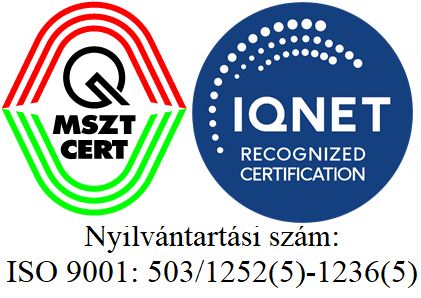IRRS Follow-up Mission: Interview with the mission team leader
2018.09.28
Three years ago we interviewed Michael R. Johnson, team leader of the 2015 IRRS Mission. In this year’s follow-up mission, there is a smaller number of experts in the delegation and they have to finish their work in a shorter time. In one week, they have to review the present situation, conclude several interviews, and create the draft of the new report. Speaking about the new follow-up mission, we invited Mr Michael R. Johnson for an interview again to share some interesting details about the work they are here to perform.
Whereas the objective of the initial
mission in 2015 was to review Hungary’s safety regulation of all nuclear
facilities and radiological activities, the main focus of the follow-up
mission is to review the progress made by Hungary in implementing improvements
resulting from recommendations and suggestions during the initial mission.
In that sense, the follow-up mission activities are more narrowly focused.
Where appropriate, the team will also address areas of significant
change since the last mission. While reviewing the progress made, it might
well be that new gaps or potential improvements are identified, leading
to the offering of new recommendations and suggestions.
Do you also check if the good practices
you found three years ago are still in place, and if there are new ones,
or you only focus on the areas that should be improved?
Good practices are intended to recognize
and outstanding organization, arrangement, program or performance superior
to be observed elsewhere. Several good practices were identified for Hungary
during the initial mission. These good practices were shared with the international
community to assist other countries in their efforts to enhance their regulatory
programs. Good practices go beyond the fulfilment of current requirements
or expectations. Therefore, they are not required to be maintained and
do not receive review during the follow-up mission. Regardless of whether
they are maintained, they may continue to be used by other regulatory bodies
as a model in their general drive for excellence. The IRRS team may identify
new good practices as it reviews progress made and changes that may have
occurred since the initial mission.
Does the one week time frame and the
smaller team mean that it is necessary to be more effective, is it a bigger
challenge compared to the previous mission?
There is always an expectation that the
IRRS mission be conducted effectively and efficiently. However, a
follow up mission is usually smaller compared to initial missions because
the team is more focused on specific topics (i.e., those resulting in recommendations
and suggestions of the initial mission) and does not need to review the
entire national regulatory infrastructure for nuclear and radiation safety.
In addition, because the team members participated in the 2015 mission,
the team is already familiar with the national arrangements. This allows
the follow up mission to be completed in a shorter amount of time.
This is the 100th IRRS Mission of
the International Atomic Energy Agency. Does this fact have a special importance
for the team?
The 100th anniversary of the IRRS mission
reflects strongly on the success of the IRRS programme, its continuous
improvement and its lasting value in improving the performance of national
regulatory bodies around the world in implementing the IAEA safety standards.
Therefore, the anniversary is a landmark for the IAEA and its member states.
While each mission carries an equal sense of importance for IRRS participants,
the team is particularly proud to mark this special accomplishment.
The interview was made by Gábor Körmendi, communication officer of the HAEA.



 ©HAEA - All rights reserved
©HAEA - All rights reserved